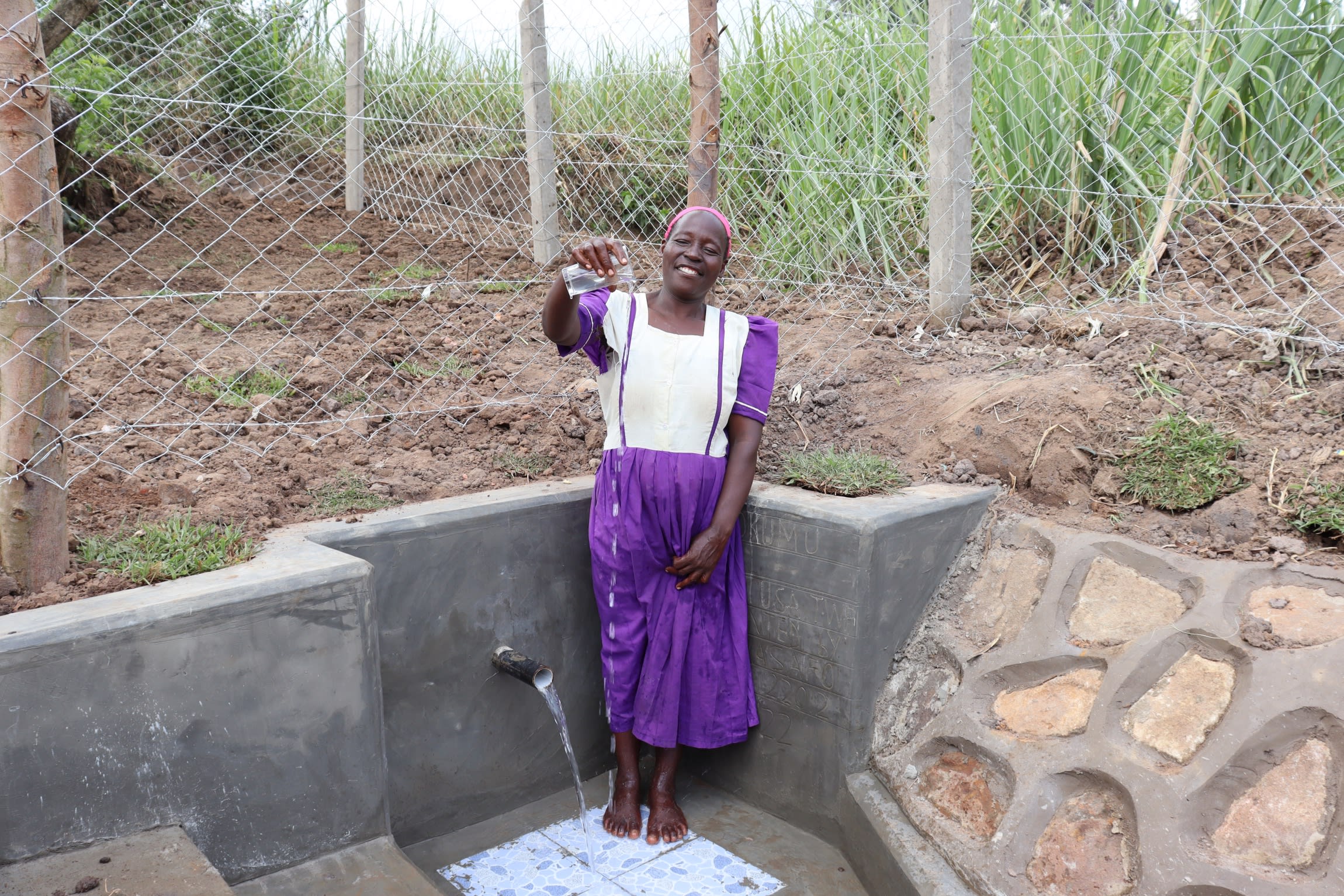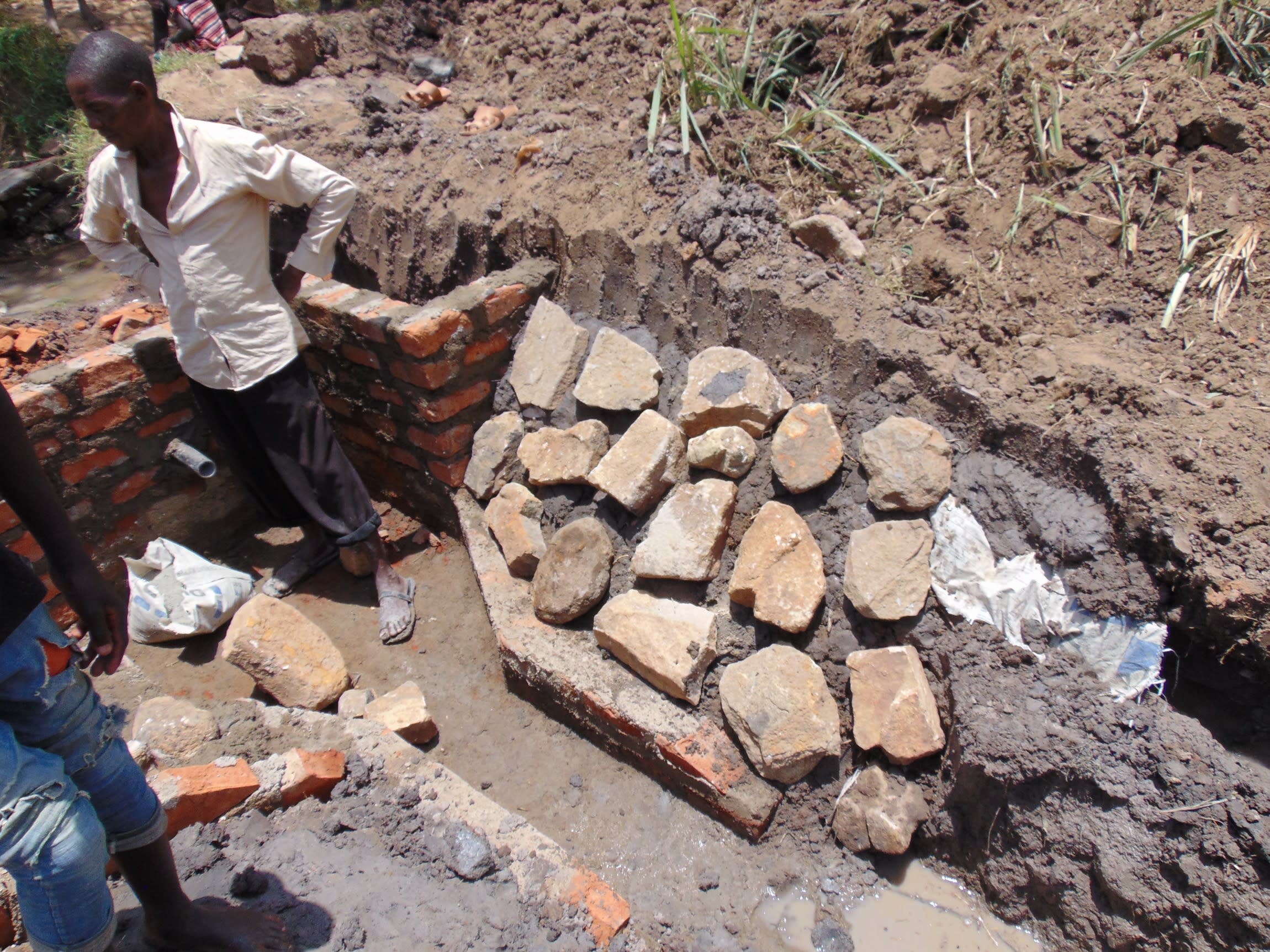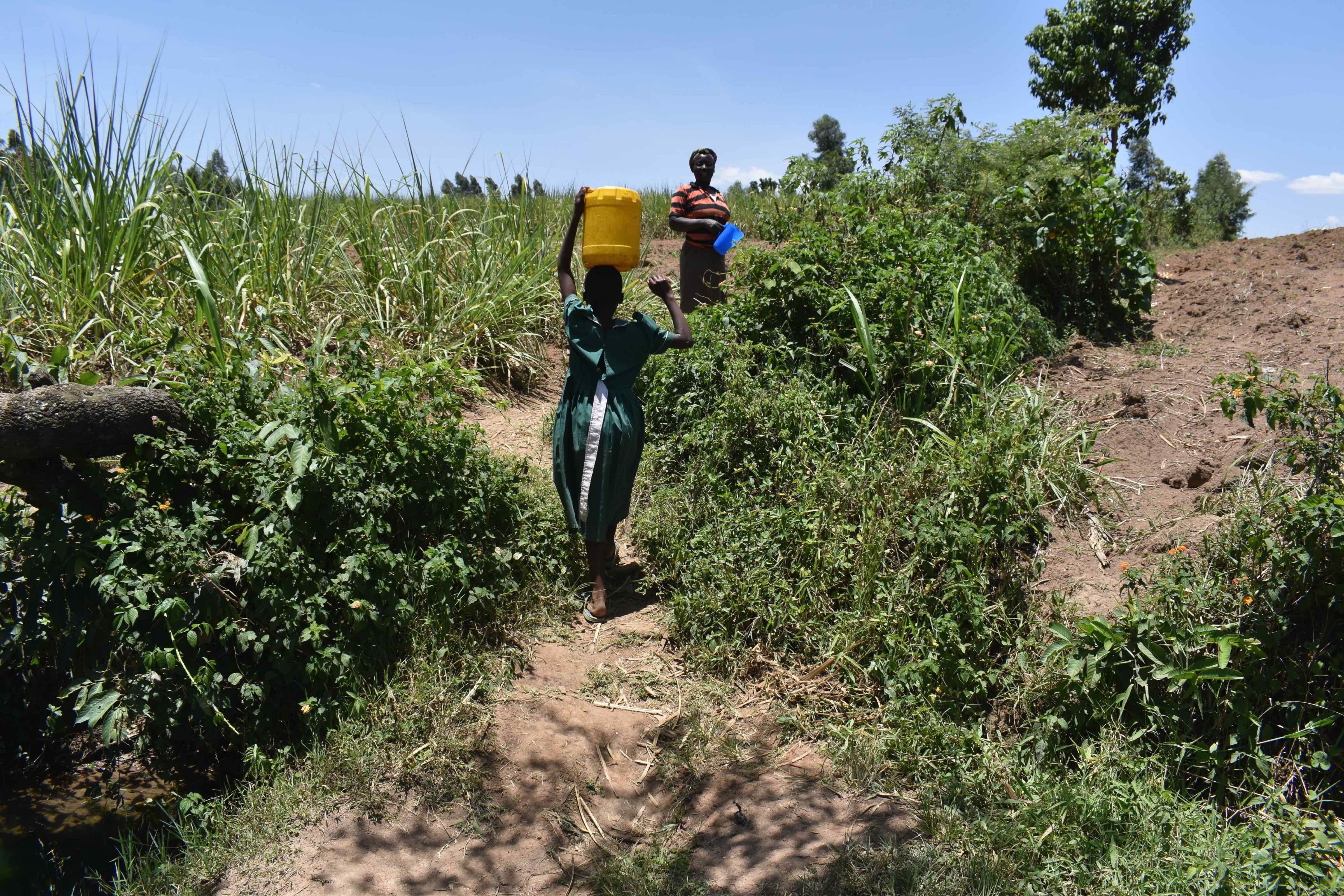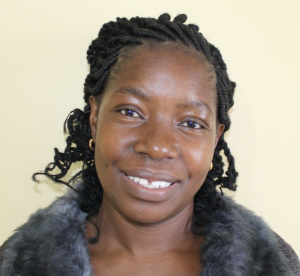May, 2022: Lunyinya Community Spring Protection Complete!
Lunyinya Community now has access to clean water! We transformed Francis Okumu Spring into a flowing source of naturally filtered water thanks to your donation. Our team also trained the community on improved sanitation and hygiene practices. Together, these components will unlock the opportunity for community members to live better, healthier lives.

"Before the implementation of this project, the water was open to contamination," said Rispah Nanzala, 42.
"I would frequent the hospital with episodes of diarrhea. Also, I would always find people scrambling around for water. But now, I believe that there will be no more scrambling and quarreling because in a minute people will have filled their containers and [been] ready to go back to their homes. I believe also that, having safe water will greatly reduce the visits to [the] hospital and help save the money that can be used in other ventures."

Rispah pours water at the protected spring.
"I intend to use this water for sanitation purposes to ensure that I maintain high standards of cleanliness both personally and even around me with my family, too," Rispah continued. "I hope that I can also start on the kitchen garden that I have been desiring to have around the compound."
Children were just as excited as adults about the new waterpoint.
"Before the installation of the water point, we would have to make long queues and fetch water for very long periods of time," said 10-year-old Ruth O. "As a result, disputes would arise among people. Also, a few times I have had to be treated for typhoid and even amoeba because of the contamination of the water."

Ruth fills a glass.
"But I believe having access to safe and reliable water will help reduce [the] chances of conflicts among members because they will now spend very little time at the water point. Also, I believe now that [the water] is safe for consumption, I won't have to worry about getting sick from drinking the water again."

Ruth and Rispah, in the purple dresses, smile amongst other community members.
"Before construction, I would sometimes have to put on my uniform up to three days before I wash and skip at least a day before I shower due to the long queue at the water point," Ruth said. "Now, I know I will be able to access water as often as I want, therefore that means I will be able to carry out cleaning activities without any hassle."
Preparing for Spring Protection
Community members worked together to source and carry all locally available construction materials to the spring. These included bricks, sand, stones, and fencing poles. Some people also chiseled away at large rocks to break them down into gravel. Because people have to carry most items by hand, the material-collection process can take anywhere from a few weeks to months.

Community members bring stones to the construction site.
When the community was ready, we sent a lorry to deliver the remaining construction materials, including cement, plastic tarps, and hardware. Then, our construction artisan and field officers deployed to the spring to begin work. Individual households provided meals throughout each day to sustain the work team.
From Open Source to Protected Spring: A Step-by-Step Process
At last, it was time to dig in at the spring! Locals lent their strength to the artisans to help with the manual labor.
First, we cleared and excavated the spring area. Next, we dug a drainage channel below the spring and several runoff diversion channels above and around the spring. These help to divert surface contaminants away.
To ensure community members could still access water throughout the construction process, we also dug temporary channels from the spring's eye around the construction site. This allowed water to flow without disrupting community members' tasks or the construction work.

Excavation.
Excavation created space for setting the spring's foundation, made of thick plastic tarp, wire mesh, concrete, and waterproof cement. After establishing the base, we started brickwork to build the headwall, wing walls, and stairs.
Once the walls had grown tall enough, we began one of the most crucial steps: setting the discharge pipe. The discharge pipe needs to be positioned low enough in the headwall so the water level never rises above the spring's eye, yet high enough to allow room for the average jerrycan (a 20-liter container) to sit beneath the pipe without making contact.

Setting the discharge pipe.
If we place the discharge pipe too high above the spring's eye, backpressure could force water to emerge elsewhere. Too low, and community members would not be able to access the water easily. We embedded the pipe using clay (or mortar when clay is in short supply) and placed it at an incline to ensure water flows in the right direction.
In coordination with brickwork, we pitched stones on both sides of the spring's drainage channel. We then cemented and plastered each stone, forming the rub walls. These walls discourage people and animals from standing in that area, which could cause soil erosion and a clogged drainage area.

Stones awaiting their cement outline.
We then cemented and plastered both sides of the headwall and wing walls. These finishing layers reinforce the brickwork and prevent water in the reservoir from seeping through the walls. In turn, enough pressure builds in the reservoir box to push water out through the discharge pipe.
As the headwall and wing walls cured, we cemented and plastered the stairs and installed four tiles beneath the discharge pipe. The tiles protect the concrete from the falling water's erosive force while beautifying the spring and facilitating easy cleaning of the spring floor.

Placing the tiles.
The final stage of construction is backfilling the reservoir box behind the discharge pipe. We cleared the collection box of any debris that may have fallen during construction. Then we redirected the temporary diversion channels back into the reservoir box, channeling water into this area for the first time. We closed off all of the other exits to start forcing water through the discharge pipe only.

Artisans fit stones together in the spring box.
We filled up the reservoir area with the large, clean stones community members had gathered, arranging them in layers like a well-fitting puzzle. We covered the rocks with a thick plastic tarp to minimize potential contamination sources, then piled enough dirt on top to compensate for future settling.

Community members get ready to help cover the spring box with soil.
Community members transplanted grass onto the backfilled soil to help prevent erosion. Finally, the collection area was fenced to discourage any person or animal from walking on it. Compaction can lead to disturbances in the backfill layers and potentially compromise water quality.

Grass planting.
The entire construction process took about two weeks of work and patience to allow the cement and plaster to finish curing. As soon as the spring was ready, people got the okay from our field officers to fetch water.

Community members carry full jerrycans home.
Training on Health, Hygiene, COVID-19, and More
Together with the community, we found their preferred date for training while considering other community calendar events, such as the agricultural season and social events. We requested a representative group of community members to attend training to relay the information learned to the rest of their family and friends.
When the day arrived, facilitators Patience, Rose, and David deployed to the site to lead the event.

The training group poses with their notebooks.
We covered several topics, including community participation in the project, leadership and governance, personal and environmental hygiene, water handling and treatment, spring maintenance, dental hygiene, the ten steps of handwashing, disease prevention, and how to make and use handwashing stations.

During the leadership and governance session, we held an election for the newly formed water user committee leaders, who will oversee the maintenance of the spring. We also brainstormed income-generating activities. Community members can now start a group savings account for any future minor repairs to the spring and a cooperative lending group, enabling them to develop small businesses.
The most memorable topic in Lunyinya was teenage pregnancy, which has been a problem in this community. When we asked parents how they discuss this topic with their children, they responded that in the past they have threatened their teenage girls to not have sex and chased them out of their homes when they did fall pregnant.
After long discussions among participants and the facilitators, it was agreed that the best way to handle the situation in the future would be to talk to their children with love. In the case of pregnancy, girls should be forgiven and treated with love.

Ruth assists the facilitator, Patience, with her handwashing demonstration.
Another topic that caused quite a stir (pun unintended) was soap-making. All the ladies were excited to learn this new skill. They took turns stirring the mixture while singing happy songs and thanked the facilitators for teaching them.

"Before this training, there were some things I would do which, apparently, are not really good," said Ruth. "But now, I have added to the knowledge I already had and learned new things about sanitation and hygiene practices, which I believe will help me change how I did some things, like handwashing and dental hygiene, among others. Soap-making skills will help my family reduce the cost of buying soap."
When an issue arises concerning the spring, the water user committee is equipped with the necessary skills to rectify the problem and ensure the water point works appropriately. However, if the issue is beyond their capabilities, they can contact our field officers to assist them. Also, we will continue to offer them unmatchable support as a part of our ongoing monitoring and maintenance program.
Thank you for making all of this possible!




 Protected Spring
Protected Spring
 Rehabilitation Project
Rehabilitation Project








































